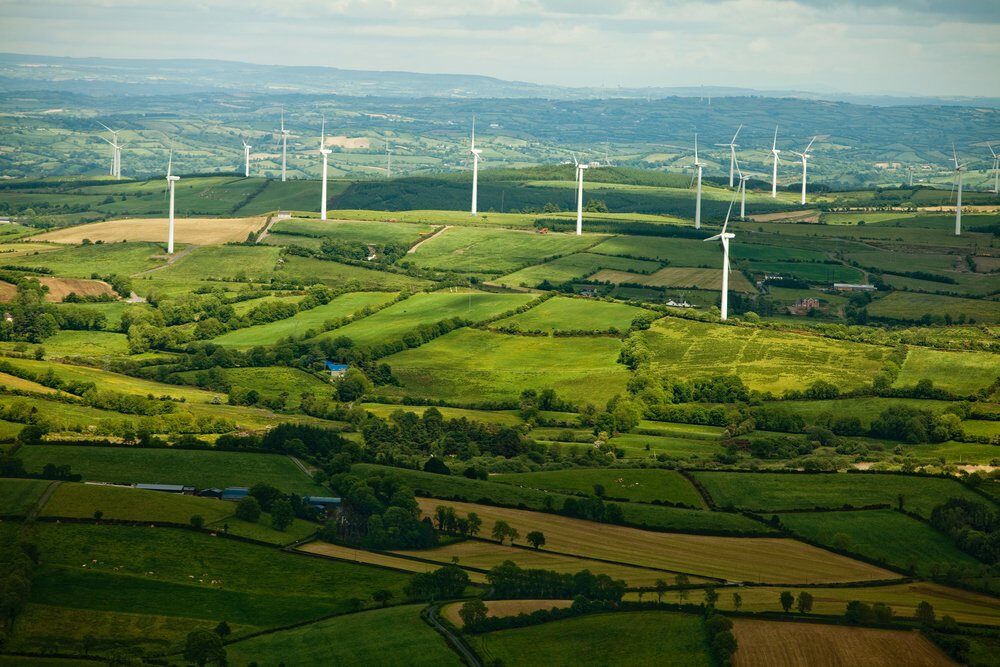Carbon Reduction vs. Compensation: A Guide for Companies
CO2 compensation or CO2 reduction for companies? An overview of the various ways in which companies...
By: Johannes Fiegenbaum on 4/30/24 11:17 AM

Learn more about energy-efficient platforms, eco-friendly materials, and sustainable practices to minimize environmental impact while effectively promoting your products and services.
As companies increasingly recognize the need for sustainability, reducing the carbon footprint of marketing activities is becoming critical alongside carbon accounting. The marketing mix, which includes various advertising strategies and channels, plays a significant role in this endeavor. This article highlights the importance of addressing key areas such as digital marketing, outdoor advertising, print, and devices to reduce the environmental impact of marketing.
Looking at what the industry has done so far, according to IAB Europe, only 18% of companies have set SBTi targets. 15% are also in the process of doing so. In terms of the impact of digital advertising, only a quarter (24%) of respondents said they were developing a framework, methodology or modelling of the impact of digital advertising.
According to an IAB Europe survey, what other measures have been taken?
.png?width=2661&height=1050&name=output%20(21).png)
Digital marketing has become increasingly important in today's business world, with more and more companies using online platforms such as Google, Instagram, or TikTok to reach their target audiences. However, this shift to digital marketing has also raised concerns about its environmental impact. A study by LichtBlick sheds light on the carbon footprint of digital advertising and emphasizes the importance of energy consumption and its impact on greenhouse gas emissions. The study underlines the need to consider the quality of electricity used in digital marketing activities as it has a significant impact on the overall carbon footprint.
To reduce the carbon footprint of digital marketing, companies can implement several strategies. One approach is to choose energy-efficient platforms and technologies that can minimize energy consumption and greenhouse gas emissions.
Another strategy is to use renewable energy sources to power digital marketing activities, such as solar energy or wind power. In addition, companies should monitor and optimize data transmission and consumption, as this can have a significant impact on the overall carbon footprint of digital marketing campaigns.
Out-of-home (OOH) advertising, which includes billboards, transit ads, and other forms of outdoor media, remains a relevant marketing channel despite the growing focus on digital strategies. However, like digital advertising, OOH also contributes to carbon dioxide emissions and energy consumption. LichtBlick's study highlights the environmental impact of OOH advertising and emphasizes the need to address energy consumption and CO2 emissions in this marketing channel.
There are various strategies that companies can adopt to reduce the carbon footprint of OOH advertising. One approach is to choose energy-efficient and environmentally friendly materials and technologies in the production and display of OOH ads. In addition, using renewable energy sources to power OOH display screens can significantly reduce carbon emissions. Finally, working with suppliers and partners committed to sustainability ensures that the entire OOH advertising supply chain prioritizes environmentally responsible practices.
Despite the digital revolution, print marketing still plays a relevant role in the overall marketing mix. This includes brochures, catalogs, direct mail, and other printed materials that help companies reach their target audience. However, the environmental impact of printed marketing materials cannot be ignored as they contribute to carbon dioxide emissions and waste generation.
To reduce the carbon footprint of print marketing, companies can adopt several strategies. First, using eco-friendly and recycled materials for printed marketing materials helps to minimize the environmental impact. Second, choosing environmentally responsible printing processes and suppliers ensures that the production of marketing materials follows sustainable practices. Finally, minimizing waste through efficient design and distribution strategies can further reduce the carbon footprint of print marketing activities.
Various devices such as smartphones, tablets, desktops, and smart TVs play an important role in marketing activities as they facilitate the delivery and consumption of digital marketing content. LichtBlick's study highlights, for example, the energy consumption and carbon emissions associated with various devices and emphasizes the need to consider their environmental impact in marketing strategies.
Reducing the carbon footprint of appliances in marketing can be achieved through several strategies. Promoting energy-efficient device use among employees and customers can significantly reduce energy consumption and carbon emissions. Implementing device management policies that prioritize sustainability ensures that marketing activities are in line with environmentally responsible practices. In addition, using energy-efficient devices for marketing activities can further minimize the overall carbon footprint of marketing campaigns.
Reducing the carbon footprint of marketing activities is of paramount importance in today's business world. It is critical for companies to incorporate sustainable practices into their marketing mix, including digital marketing, outdoor advertising, print, and equipment usage. By continuously evaluating and improving their carbon footprint reduction efforts, marketers can contribute to a more sustainable future while effectively promoting their products and services.
As an expert in marketing consulting, my mission is to help companies optimize their marketing strategies, including the adoption of sustainable practices that align with their goals and values. In combination with marketing mix modeling, you and your company will take big steps towards a future-proof marketing mix.

A solo consultant supporting companies to shape the future and achieve long-term growth.
More about meCO2 compensation or CO2 reduction for companies? An overview of the various ways in which companies...
This guide helps sustainability managers learn how to measure and report financed emissions. It...
This guide highlights two key Life Cycle Assessment (LCA) tools: the EU’s Product Environmental...